Hunor Deak in Arbroath: The Geology of the Seaton Cliffs of Arbroath and the Sandstone of the Arbroath Abbey
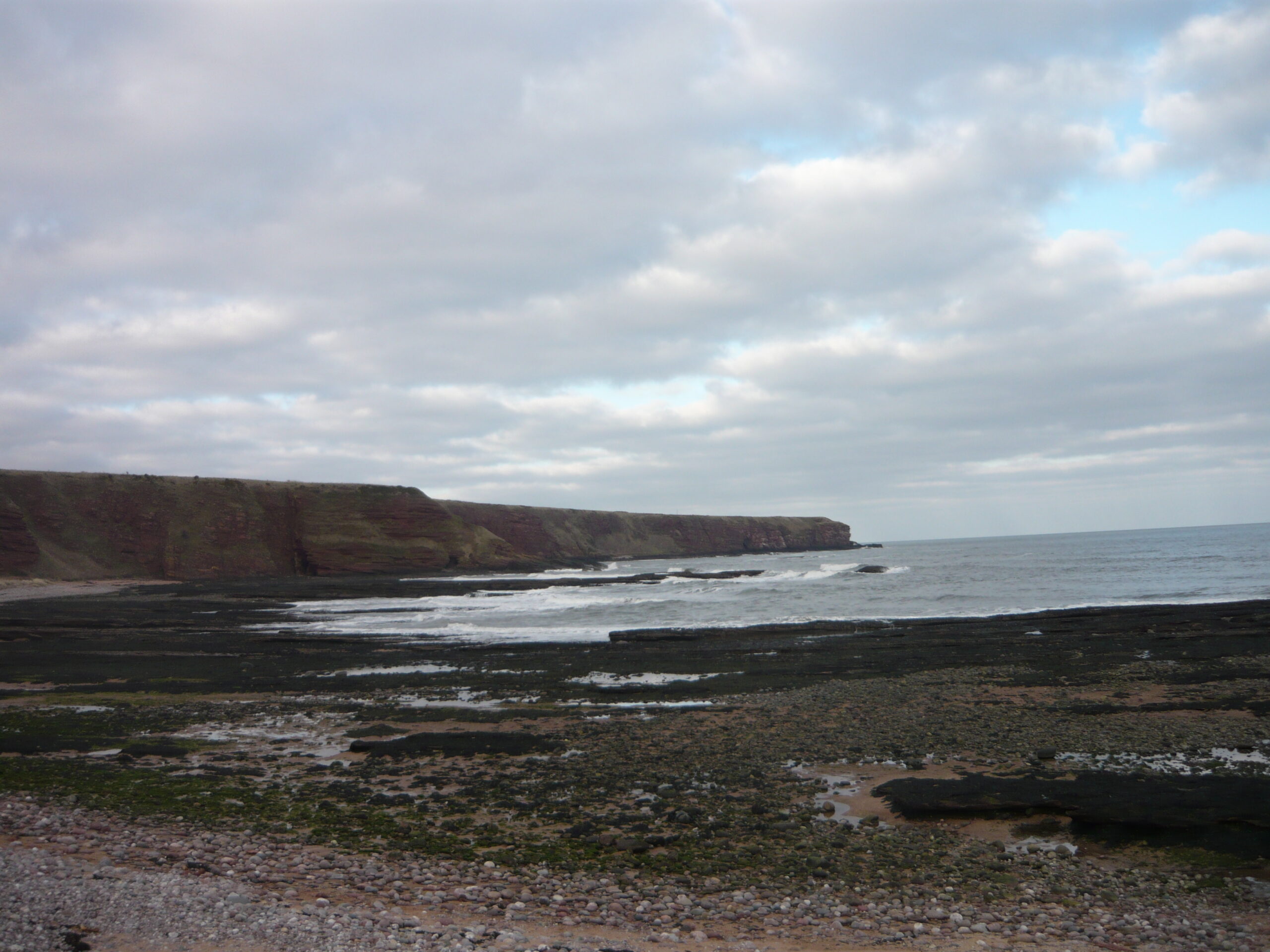
Living in Arbroath
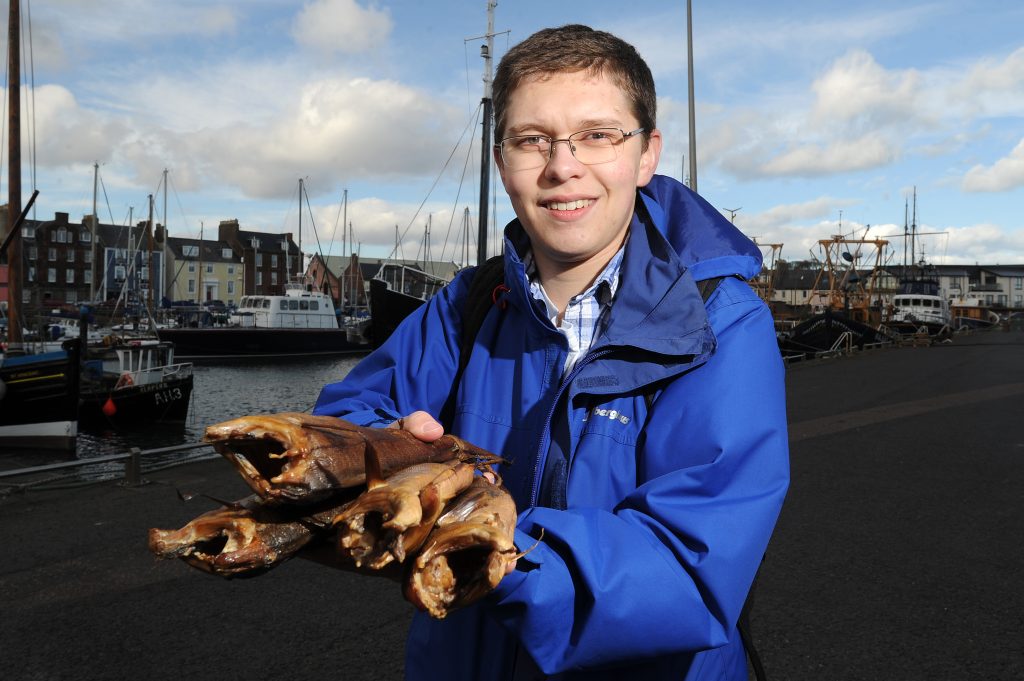
Hunor Deak with fish
Arbroath is a small town situated between Dundee and Montrose on the Scottish east coast. I might be biased a bit since I lived there for the past 5 years. However I travelled Scotland quite extensively from the geological wonders of the Isle of Skye to the multicultural streets of Edinburgh. Even so I couldn’t find any place similar to Arbroath. Arbroath is a brilliant mixture of geology, history, cuisine and beautiful beaches (if you know where to go). The place provides something for everybody.
Arbroath is a treasure trove of history. It contains buildings and museums showcasing the entire history of Scotland. St Vigeans offers us a window to the ancient past of Scotland when the Picts roamed the land. Digs from the nearby sites provided evidence of human inhabitants going back as 3500 BC. The Arbroath Abbey tells a tale of Scotland as a free nation. It is pleasant to know that the US Constitution can be traced back to Arbroath to a time when a giant cathedral dominated the landscape. The Declaration of Arbroath was always a special document as it hinted on the idea that the king cannot rule the land without the consent of the lords. The Hospitalfield House stands as a testimony to a nation that loves and cherishes fine art. When you walk through the front gates you are taken back to a time when Scotland was part of an empire with people who collected and protected artefacts. The Signal Tower with its wonderful museum presents a town that was founded on fishing and trade. Its exhibitions tell tales of shipwrecks, pirates and of simple people who made their living of the sea. Along with all this history, the museum shines a light on a feat of engineering that stands as a beacon for the industrial revolution: The Bell Rock Lighthouse. This structure stands tall above the water as a symbol of Scottish ingenuity. It shows that people here can overcome everything what nature throws onto their way. The lighthouse looks majestic especially by way of a boat ride. (If you get lucky you might spot a couple of dolphins surfing the water). The history trip doesn’t end there: the town also has an artefact from the Cold War. Right above the caravan parks, tucked in a little forest the town has its own nuclear bunker. If you know the people who manned it, they are more than happy to take you to their cramped underground quarters. The bunker serves as a reminder of the horrors of a possible nuclear war.
A geological Journey
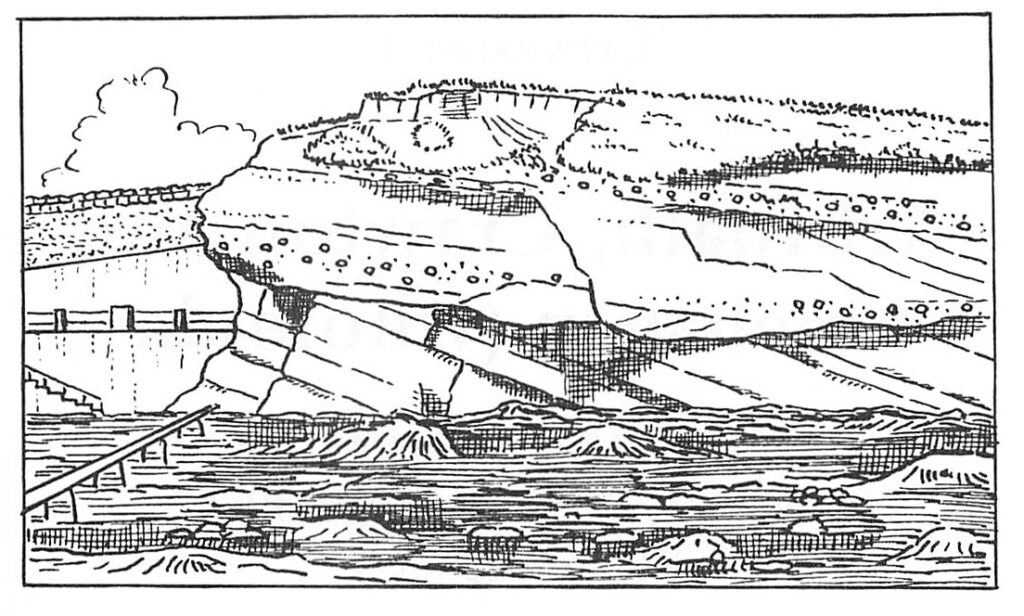
Upper Old Red Sandstone conglomerate and sandstone resting unconformably on south-east-dipping Arbroath Sandstone of the Garvock Group, Lower Old Red Sandstone. N end of Arbroath Promenade.
Arbroath is located on Devonian Red Sandstone which is exposed on the coast. The landscape is cut by the Highland Boundary Fault. The Highlands are metamorphic Dalradian rocks. The entire site was exposed by glaciation.
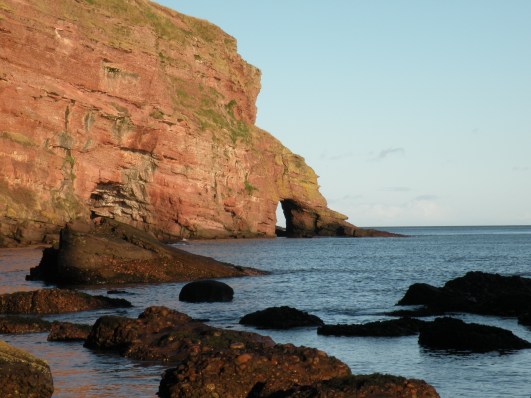
Auchmithie Arch
rbroath is not just for the history buffs. The town has been a holiday destination for a long time because of its beaches and sandstone cliffs. It is always a joy to go to the harbour and grab some smokies or fish and chips after a long day of walking among the cliffs (Irn-Bru and ice-cream from Marco’s is also a great way to close a day). As a person who studies geology I find the cliffs fascinating, they tell an amazing story of how billions of years ago Arbroath was located in a middle of a hot, arid desert. The conglomerates in the cliffs inform us of cataclysmic floods taking place in the upper Devonian periods. The cliffs provide all forms of examples of different geological formations from synclines to reverse faults. The beaches are covered with all forms of igneous and metamorphic rocks brought there by ancient rivers. In my past years I have collected several of them including sandstone xenoliths in lava, granite touching bedrock with the baked margin visible, just to mention a few. The cliffs and the beaches along with their geology provide the walker with spectacular views. Taking all the dates in consideration I personally can recommend watching the sunrise from Needle E’e, a spectacular sandstone arch.
Arbroath has plenty of other lovely oddities like Kerr’s Miniature railway running in parallel with real trains. The waterfront is wonderful with plenty of fishmongers and with a beautiful working harbour. The harbour has its own lifeboat station with a working museum showing a glimpse of the rich history of the RNLI.
Overall, Arbroath is a great town to visit and a great town to live in. This place is deeply rooted in history and geology.
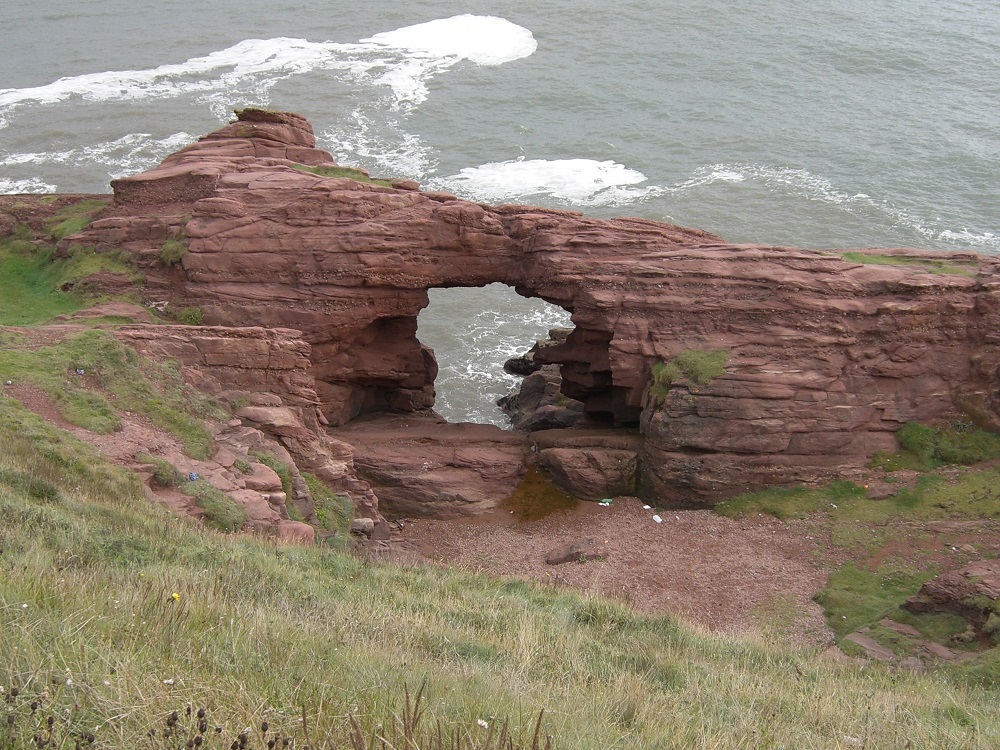
Seaton Cliffs, the Needle E’e arch; unusual in being parallel to the coast but still representing the remnant of a collapsed cave. Cut in Lower Devonian sandstones and conglomerates, the arch aperture is above modern tidal reach but storms allow access of gravel through it. Image: Mike Browne.
The Arbroath Abbey

Arbroath Abbey
The Arbroath Abbey is the crown jewel of Scottish history, as described bellow:
Arbroath Abbey is famously associated with the Declaration of Arbroath of 1320, which asserted Scotland’s independence from England.
Parts of the abbey church and domestic buildings remain, notably the gatehouse range and the abbot’s house.
Visitors can enjoy the herb garden along the south wall of the abbey church. The visitor centre provides a walk through audio-visual with a sound loop system. There is also a staff operated platform to enable disabled access to the upper viewing area.
Gravel paths and grassed areas allow access to most of the ground level of the abbey (except the sacristy), and interpretation boards in the nave. There are displays on abbey life in the ground floor of the Abbot’s House, and on the declaration of Arbroath in the ground floor of the Gatehouse. Due to the turnpike stair, there is no disabled access to the upper floors of the Abbot’s House, Gatehouse range or South transept.
Introduced in 2014 – A display tells the story of the day the Stone of Destiny came to the abbey in 1951. Interpretation panels also explore potential links between the Declaration of Arbroath and the American Declaration of Independence.
(From: https://www.visitscotland.com/info/see-do/arbroath-abbey-p247571)




Recent comments